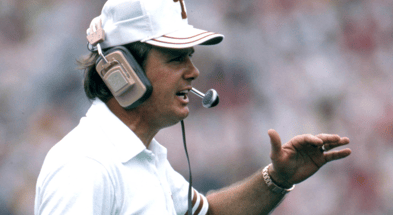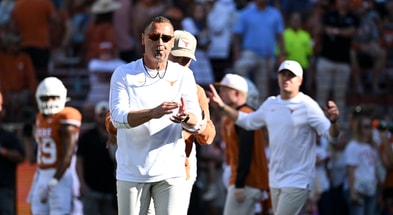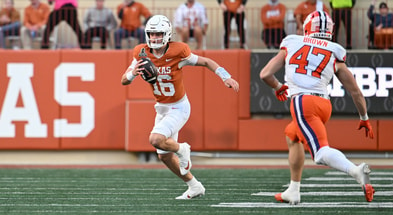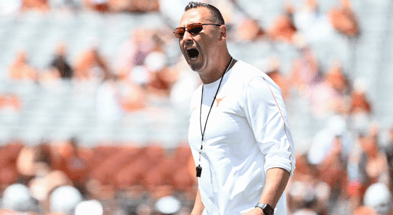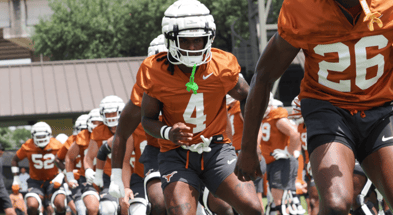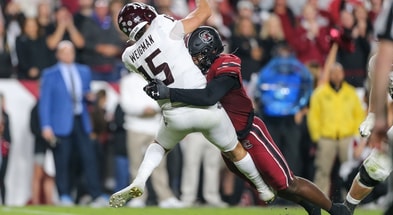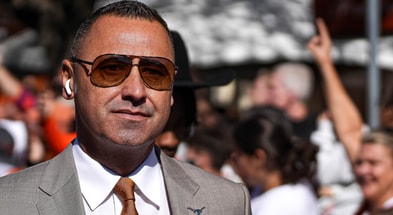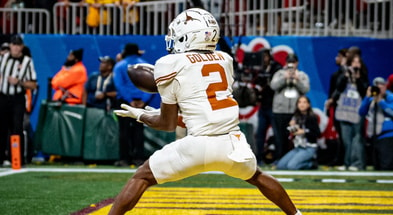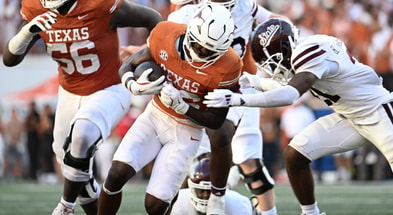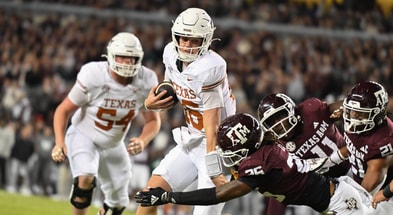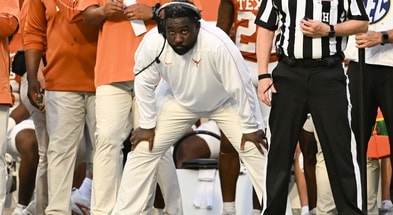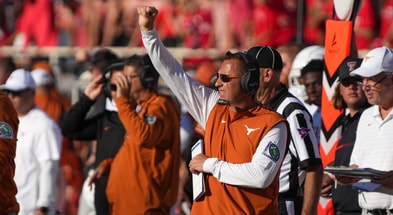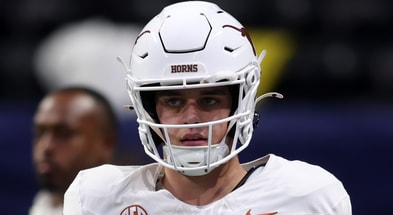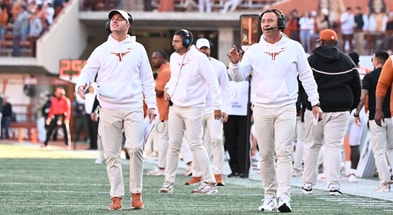What makes a Texas defense good?
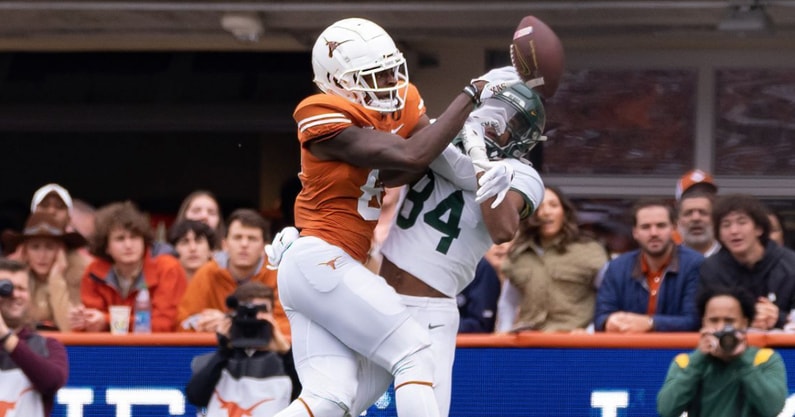
The 2022 Texas Longhorn defense was the 5th since the 2009 Rose Bowl run to yield under 24 points per game. The defense has endured some cycles throughout the 2010s in between fielding veteran units good at stopping points with poorer units including a few who gave up 30 or more per game.
[Join Inside Texas today and get the best Texas Longhorns insider team info and recruiting intel!]
Here were the top five:
| Year | Defensive coordinator | PPG allowed |
| 2010 | Will Muschamp (4-2-5) | 23.7 |
| 2011 | Manny Diaz (4-2-5) | 22.2 |
| 2014 | Charlie Strong (3-3-5) | 23.8 |
| 2017 | Todd Orlando (3-3-5/3-2-6) | 21.2 |
| 2022 | Pete Kwiatkowski (2-4-5) | 21.6 |
The composition of the five better units have a few consistent traits despite featuring five totally different defensive coordinators and five different schemes and playbooks.
What’s interesting for Texas today is the fact 2011 was the last time Texas played top tier defense in back-to-back seasons. Do they have the pieces to do it in 2023 or will they have to endure another cycle of bad units?
Pass-rush
Texas’ table above is basically the tale of a 4-down defense which ventured into 3-down territory during the 2010s before circling back at the top of the new decade with the hires of Chris Ash and then Pete Kwiatkowski (technically a base 3-4 but primarily a 4-down nickel defense). Interestingly enough, the three best 4-down seasons above were NOT the three seasons where Texas was strongest over this period at defensive end.
The 2010 defense had Sam Acho (eight sacks) and Eddie Jones (six sacks) on either edge in Will Muschamp’s last season and they weren’t the same pass-rushing terror they’d been in 2009 with Acho, Sergio Kindle, and Lamarr Houston inside at 3-technique. In 2011 they paired a sophomore Jackson Jeffcoat with junior Alex Okafor (sliding back outside from 3-technique) and got 7.5 and seven sacks from them, respectively. The 2022 defense only got 5.5 sacks from Barryn Sorrell and 1.5 from Ovie Oghoufo.
These numbers really stand out because the Longhorns really got after teams in 2012 with Okafor (12.5 sacks) and in 2013 with Jeffcoat (13 sacks) and Cedric Reed (10 sacks) but they also gave up a lot more points. Fielding a blistering pass-rush from the 4-down has been helpful but not necessarily a guarantor of good defense.
In the 3-down seasons Texas never had a single dominant Edge rushing the passer with the closest being Charles Omenihu in 2018 (9.5 sacks), when Texas gave up 25.9 ppg. The 2014 unit pressured teams with the three down linemen all hitting five or more sacks while the linebacker tandem of Steve Edmond and Jordan Hicks added nine more, defensive end wasn’t the key position. That unit, and definitely the 2017 unit, tended to do a lot of their best work with a 3-man rush, dropping eight into coverage and forcing quarterbacks to hold the ball.
The 2023 defense probably won’t be pairing hell-raising defensive ends on either edge, but history suggests they don’t need to be in order to play defense on par with the better Longhorn units of the last 13 years.
Interior play
As I’ve noted many times in the past, all of the units above had one particular feature which made a world of difference… veteran inside linebackers.
The 2010 and 2011 units had Emmanuel Acho and Keenan Robinson as upperclassmen. The 2014 defense featured the grown up version of their replacements Steve Edmond and Jordan Hicks. In 2017 Malik Jefferson was finally an upperclassman and in 2022 Texas had junior Jaylan Ford and 3rd-year starter DeMarvion Overshown.
It really shouldn’t take three years in between good defensive seasons to raise up good linebackers but Texas has been plagued by poor evaluation and development at the position which has often resulted in waiting for youngsters to learn the position by getting their butts kicked for a few years. In this regard, the Longhorns are in good shape due to returning Jaylan Ford and having upperclassmen Morice Blackwell and David Gbenda to play with him. They’re all benefitting from year three in the same defense under position coach Jeff Choate, to say nothing of the stabilizing presence of Ford and also Jett Bush or the upward pressure of Liona Lefau and Anthony Hill.
Top 10
- 1New
Adou Thiero
Injury update
- 2
Charles Barkley
Advises Chad Baker-Mazara with Nick Saban quote
- 3Trending
Bracketology
Updated as Champ Week begins
- 4
ACC Controversy
Notre Dame wins on foul call
- 5Hot
Paul Finebaum
Predicts multiple ACC departures
Get the On3 Top 10 to your inbox every morning
By clicking "Subscribe to Newsletter", I agree to On3's Privacy Notice, Terms, and use of my personal information described therein.
These teams all typically had at least one really strong defensive tackle as well to anchor the interior. Kheeston Randall was essential to those 2010 and 2011 units which otherwise were experiencing some serious depth issues at the position. The 2014 defense had a fantastic lineup with Malcom Brown and Hassan Ridgeway. This last year was headlined by Keondre Coburn, Moro Ojomo, and T’Vondre Sweat with Sweat returning and joined by what could be a 3-deep rotation. Defensive tackle isn’t one of the question marks for 2023.
The rule of three
Most of these units, as well as the better Longhorn defenses in history, were defined in part by the defensive backs. A surefire way to have a chance to play good defense in the modern era is to play at least three defensive backs at all time who can flip their hips and run with a vertical route without needing a lot of help over the top. Three is the magic number as it allows a team to take the outside receivers and slot receiver in man coverage without needed safety help on all three to do so without getting lit up.
Like at defensive tackle, the Longhorns have routinely had NFL caliber athletes (or close) in abundance at defensive back. Fielding dominant players like Kenny Vaccaro helps but simply having multiple guys on the field at the same time who are proficient in the scheme and of at least late round or UDFA quality makes a huge difference.
Last year’s Big 12 Champion K-State Wildcats had two draft picks and a UDFA starting in their secondary at either cornerback and nickel. National runner-up TCU will likely prove to have had the same formula once this next NFL Draft has a chance at some of their defensive backs.
All of the Texas defenses listed above were strong in this regard. For the 2022 Longhorns the key players were Ryan Watts, D’Shawn Jamison, and Jahdae Barron. Watts and Barron return and are joined by rising sophomore Terrance Brooks and transfer Gavin Holmes. Like some of the other defenses of Texas history, they could play four or five man coverage defensive backs at the same time if they wanted.
Playing winning college defense really comes down to having big strong guys who make it hard to run for steady gains, smaller fast guys who make it hard for wideouts to run free, and mid-sized linebackers who know where to be. It’s simple in theory and difficult in practice.
It’s been those features which defined the better Texas defenses in the modern era while a dominant pass-rush has been a nice complement to make the final leap from very good to elite. Expect the Longhorns to be at least very good in 2023 and manage back-to-back Big 12 Championship-caliber defenses for the first time since the turn of the last decade.

